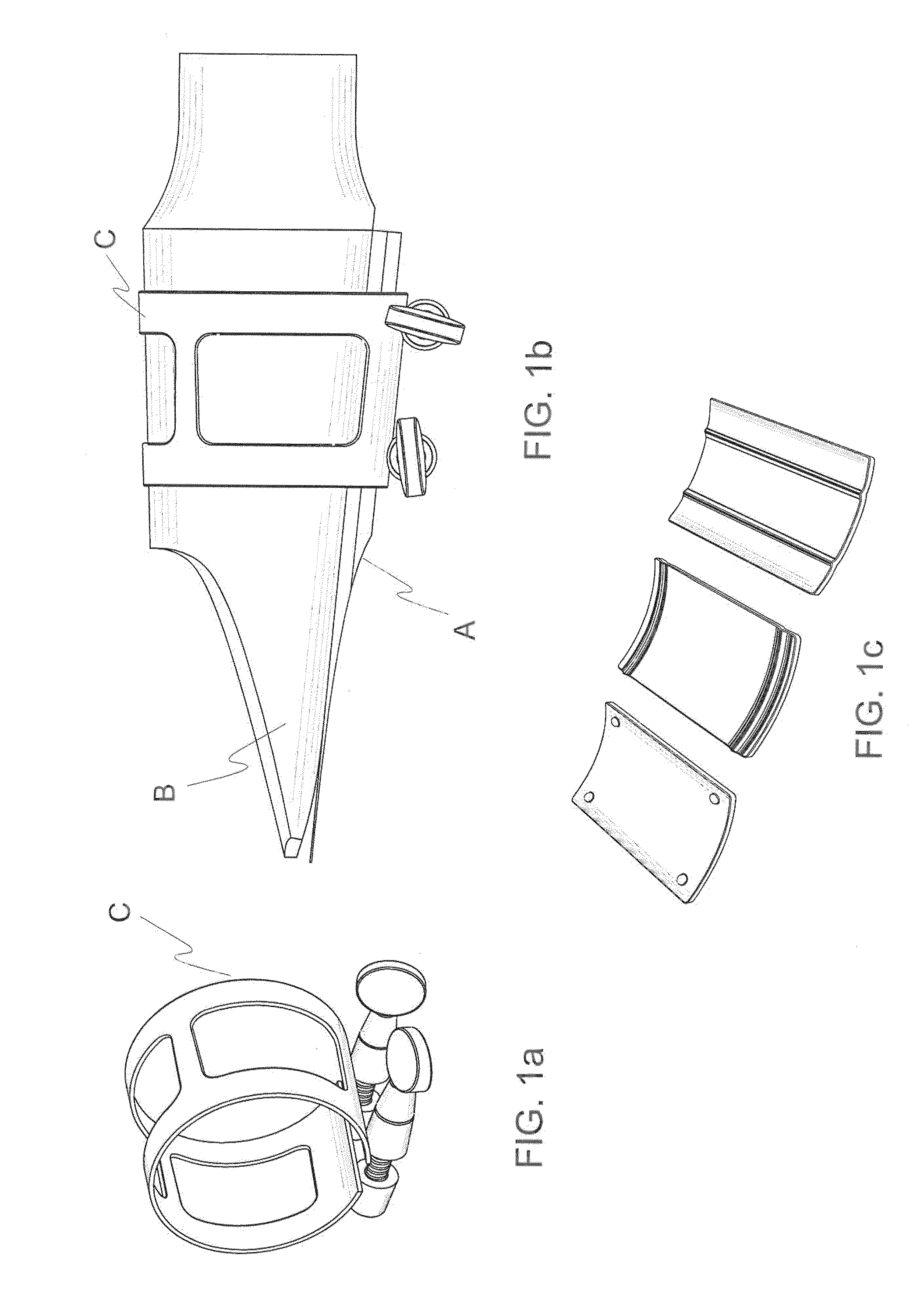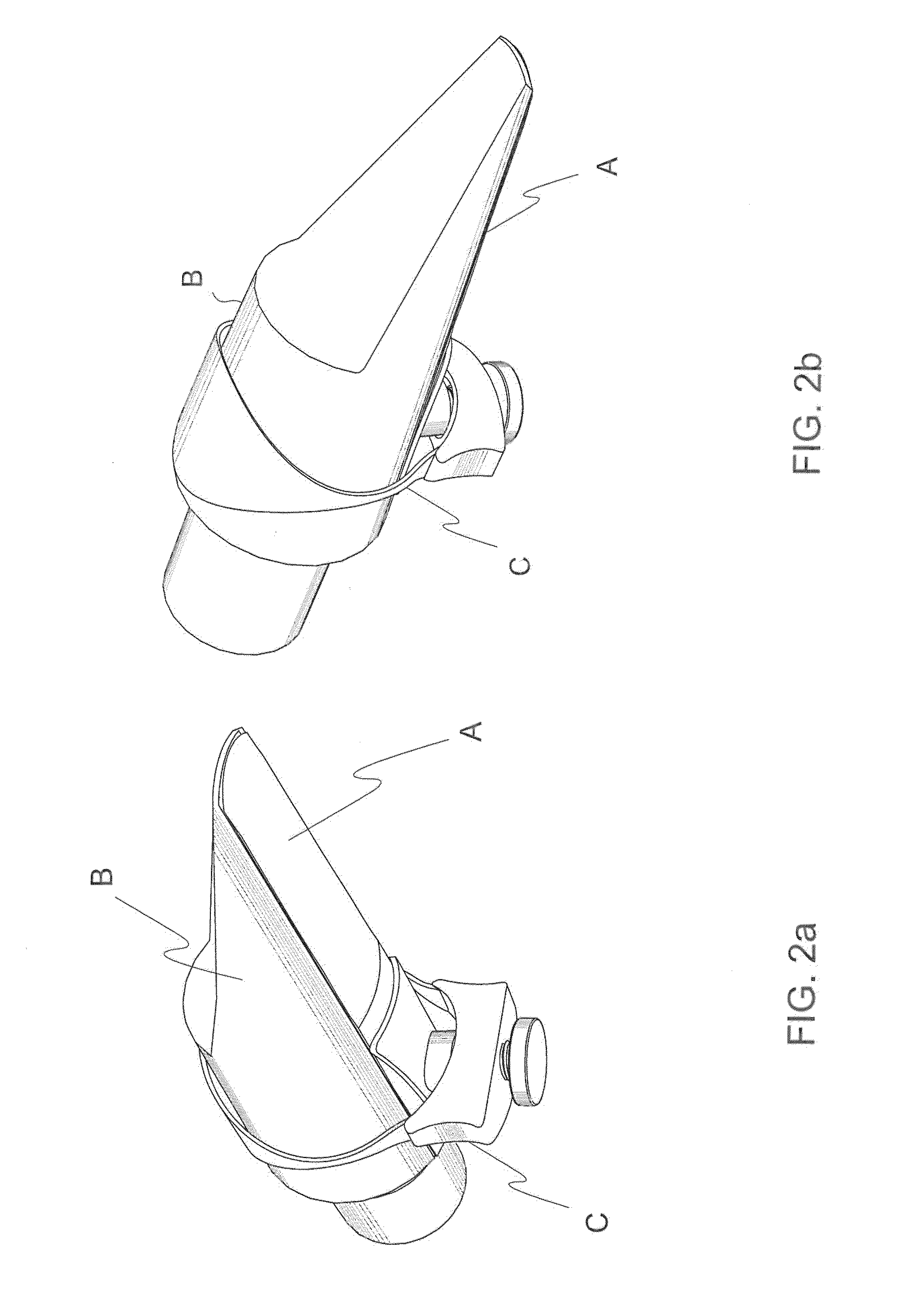Adaptable ligature for the mouthpieces of wind instruments
a technology of wind instruments and ligatures, which is applied in the direction of wind instruments, instruments, musical instruments, etc., can solve the problems of affecting the effort level of instrumentalists, sacrificing musical expression, and sounding more forced and unstable than others in the musical scal
- Summary
- Abstract
- Description
- Claims
- Application Information
AI Technical Summary
Benefits of technology
Problems solved by technology
Method used
Image
Examples
Embodiment Construction
[0093]The solution found to concurrently achieve the objectives pursued, corresponding to the present invention, is to provide a multidirectional pivoting mobile contact system. The present invention provides a solution to achieve the pursued aim, constituting a simple and ingenious conception.
[0094]In a general aspect, the invention resides in a ligature for attaching the reed to the mouthpiece of a single-reed wind instrument, basically constituted by a body, a fitting and clamping means and a multidirectional pivoting means.
[0095]In a preferred embodiment, the ligature body (C) comprises a ligature band (1) and a base (2) provided with a threaded vertical hole (3) arranged to receive the fitting and clamping means. In this embodiment the fitting and clamping means is constituted by a fitting and clamping screw (4) comprising a fitting knob (5) on one end of the threaded body and a ball-shaped ending (6) on the other end. Regarding to the shape and structure of the latter, the bal...
PUM
 Login to View More
Login to View More Abstract
Description
Claims
Application Information
 Login to View More
Login to View More - R&D
- Intellectual Property
- Life Sciences
- Materials
- Tech Scout
- Unparalleled Data Quality
- Higher Quality Content
- 60% Fewer Hallucinations
Browse by: Latest US Patents, China's latest patents, Technical Efficacy Thesaurus, Application Domain, Technology Topic, Popular Technical Reports.
© 2025 PatSnap. All rights reserved.Legal|Privacy policy|Modern Slavery Act Transparency Statement|Sitemap|About US| Contact US: help@patsnap.com



